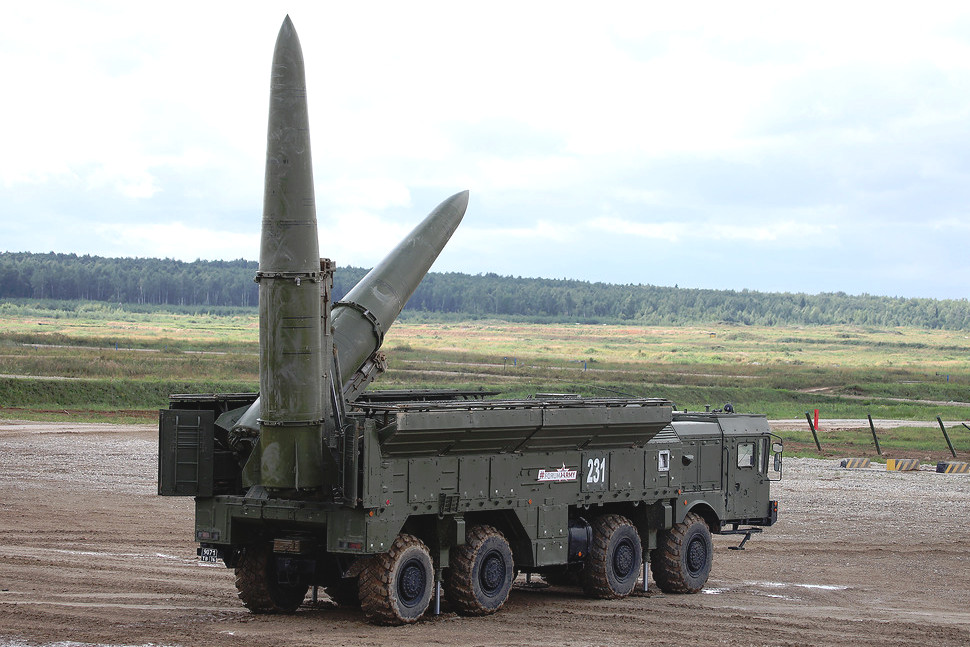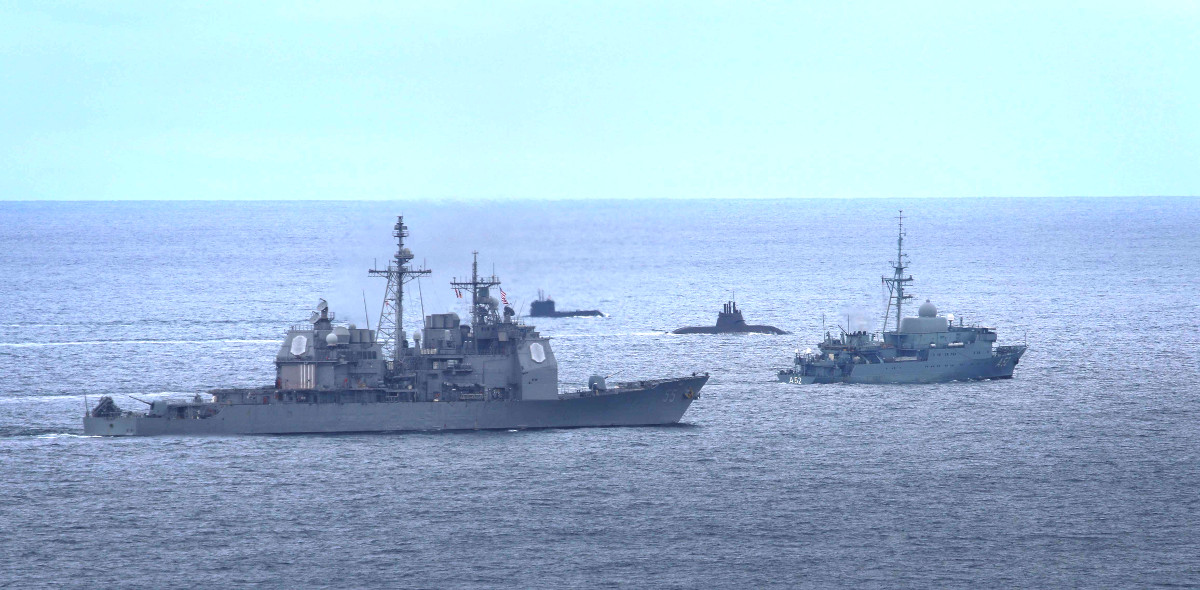The head of the Norway’s main military intelligence arm says his agency has watched as Russian military aircraft flew a number of simulated attacks on key military installations in his country and NATO warships in the region. The incidents offer yet more evidence that the Kremlin is taking an increasingly aggressive stance toward the Western alliance and that it is looking for ways harass it and its other European partners that don’t run the risk setting off an actual conflict.
Norwegian Air Force Lieutenant General Morten Haga Lunde, who is now in charge of the Norwegian Intelligence Service (NIS), also known as the Etterretningstjenesten or E-tjenesten, gave details about three separate incidents in 2017 in an annual speech to the Oslo Military Society on March 5, 2018. Neither Norwegian authorities nor NATO officials appear to have previously disclosed the threatening looking flights toward a shadowy radar facility in the town of Vardø along the Barents Sea, a flotilla of NATO ships in the Norwegian Sea, and various military facilities near the city of Bodø in northern Norway.
“Less than a year ago, on March 24th, Russian bombers were flying tactical flights towards the intelligence service’s installations in Vardø,” Haga Lunde said, according to a report by The Independent Barents Observer. “The bombers were conducting offensive profiles before they returned to bases on Kola.”
The intelligence official said nine planes in total had taken part in the apparent exercise, but did not say what type of Russian bombers he was referring to in this case or how close they got to Norwegian air space before turning around. Russia’s Olenya Air Base on the Kola Peninsula is home to Tu-22M Backfire bombers, but also serves as a staging location for Tu-95 Bears.

That the Russians would choose the Vardø radar installation as a target for a training exercise, though, isn’t necessarily surprising. The site and its Globus II array, which Raytheon originally built for the U.S. Air Force, are shrouded in secrecy.
Officially, the radar’s job is to monitor air and space activity, as well as collect data for research and development purposes. An old Raytheon website, however, said the X-band system, also known as the AN/FPS-129 Have Stare, had a specific capability to gather intelligence about ballistic missile launches. The company subsequently pulled that profile page down, reportedly at the behest of the U.S. military.

This has led some to suggest that Globus II’s main job is actually to serve as a sensor node in NATO’s ballistic missile defense shield, tracking missiles and potentially cuing sea- or land-based interceptors, such as the Aegis and Aegis Ashore missile defense systems the U.S. military is working to establish in Europe. The Kremlin routinely complains these systems are aimed at neutralizing their strategic capabilities, despite the fact that they are simply not able to challenge Russia’s nuclear deterrent.
There is also a possibility that the radar is more pointedly gathering intelligence on nearby Russian military activity, serves as a cover for a separate electronic intelligence system, or both. The array by itself could have the range and power to “peer inside” Russia and closely monitor military movements or gather information about missile tests depending on the location of the launch sites and flight trajectories.

In 2000, a storm ripped off the randome and showed the array was pointing at Russia, but Norwegian officials claimed it was a coincidence. In 2016, Norway announced it would begin building a new array, commonly referred to as Globus III, and that it expected the construction would be finished in 2020.
Either as a ballistic missile defense sensor or an intelligence gathering outpost, during any potential conflict, Vardø would likely be an important target for Russian forces to neutralize as quickly as possible. It might help explain why Russia positioned Iskander-M nuclear-capable short-range ballistic missiles in the Pechnega valley, within 10 miles of the Norwegian border and well within range of the radar site, during the massive Zapad-2017 exercises – another piece of information Haga Lunde revealed during his speech.

The Kremlin insists that those drills, which it holds every four years with Belarus and includes thousands of troops, are for defensive purposes only. However, the large scale exercises appear to simulate a major conflict against a high-end opponent, such as NATO and its other European partners, including non-member states along Russia’s borders, such as Finland and Sweden.
In October 2017, reports emerged that the Russians had jammed cell phone and GPS networks in Scandinavia and the Baltic region during Zapad-2017. Responding to those reports, Norway’s E-tjenesten
confirmed GPS outages had occurred in and around the country’s borders and that the source of the interference came from Russia, but the agency also said they did not believe the Russians had deliberately targeted any states in particular with the apparent test of their growing capabilities in this regard.
But Lieutenant General Haga Lunde said that incidents involving Russia hadn’t been limited to areas near Norway’s borders with Russia. In May 2017, a dozen Russian combat aircraft, including Tu-22M Backfire bombers, Su-34 Fullback multi-role combat jets, MiG-31 Foxhound interceptors, and Su-24 Fencer strike planes, flew from bases in the Kola Peninsula and appeared to set up for attack runs on NATO ships conducting an exercise in the Norwegian Sea much further to the west.
According to the Barents Observer, Haga Lunde did not specify what NATO drills he was referring to, but the date he mentioned matched up with the EASTLANT 17 naval exercise. EASTLANT 17 was a German-led, Norwegian hosted anti-submarine training event that also included the U.S. Navy. Submarines from each country took part, providing realistic targets for surface warships and maritime patrol planes to practice hunting, while giving those crews and opportunity to test their own skills.

Later in May 2017, another nine unspecified Russian aircraft reportedly appeared near the city of Bodø, Haga Lunde said. At the time, NATO air forces, along with aircraft from Sweden and Finland, were conducting a major aerial drill called Arctic Challenge.
This was the biggest air warfare exercise in Western Europe in 2017, involving more than 100 aircraft from 12 nations in total. The incident prompted the Norwegian Air Force to scramble F-16 Viper fighter jets to intercept the Russians.
There is no indication that Russian aircraft got close enough to directly interfere with Norwegian military or NATO activities or create an otherwise dangerous situation. But the incidents do represent an increase in general tensions between Russia and its neighbors in Scandinavia, as well as NATO more broadly, and tit-for-tat responses from the Kremlin since 2014.

In that year, Russia seized control of Ukraine’s Crimea region and began actively supporting separatists fighting the government in Kiev, prompting condemnation from NATO members and other countries around the world. That criticism has only grown as a result of Russia’s support for Syria’s brutal dictator Bashar Al Assad.
International waters and airspace in and around the Baltic Sea and Black Sea, where NATO members and their partners often come into contact with Russian forces, have similarly seen heightened tensions. This largely indirect harassment of foreign military activities, along with other hybrid warfare campaigns, such as spreading disinformation and executing cyber attacks on foreign military personnel and political institutions, are becoming hallmarks of Russia’s increasingly assertive foreign policy.
These approaches all offer the Kremlin relatively low-risk means to challenge its opponents in ways that are unlikely to provoke an actual war. They also muddy the waters and distract from Russia’s own transgressions.
At the same time, Russian officials, and the country’s President Vladimir Putin in particular, seem more of the opinion than ever that the United States, the rest of NATO, and their partners are threat. In a fiery speech on March 1, 2018, Putin publicly unveiled a host of “invincible” strategic weapons and made a number of veiled threats toward the United States and the rest of Russia’s international opponents.
As such, unfortunately, it seems unlikely that the incidents Lieutenant General Haga Lunde described will come to an end any time soon.
Contact the author: joe@thedrive.com
